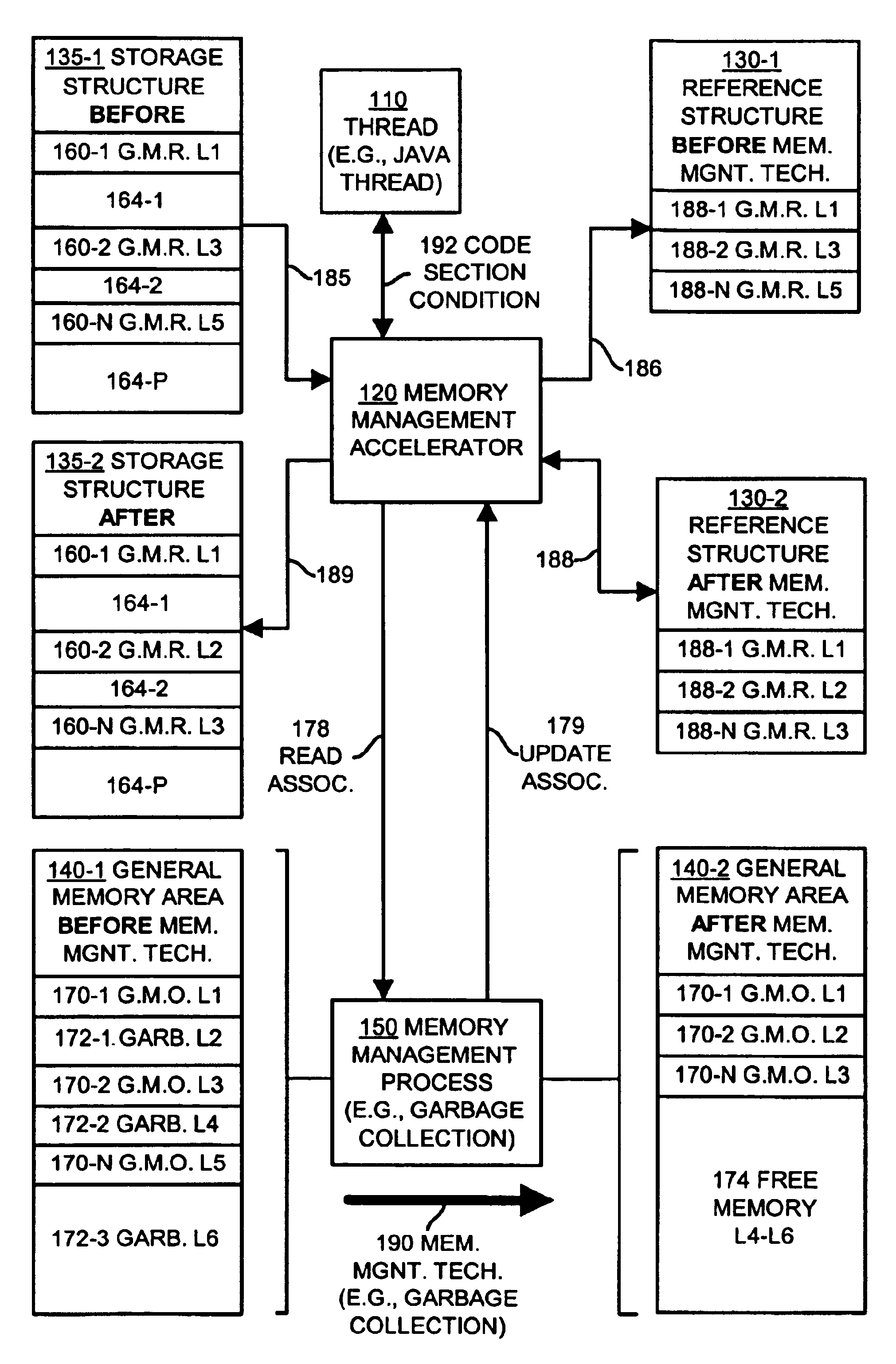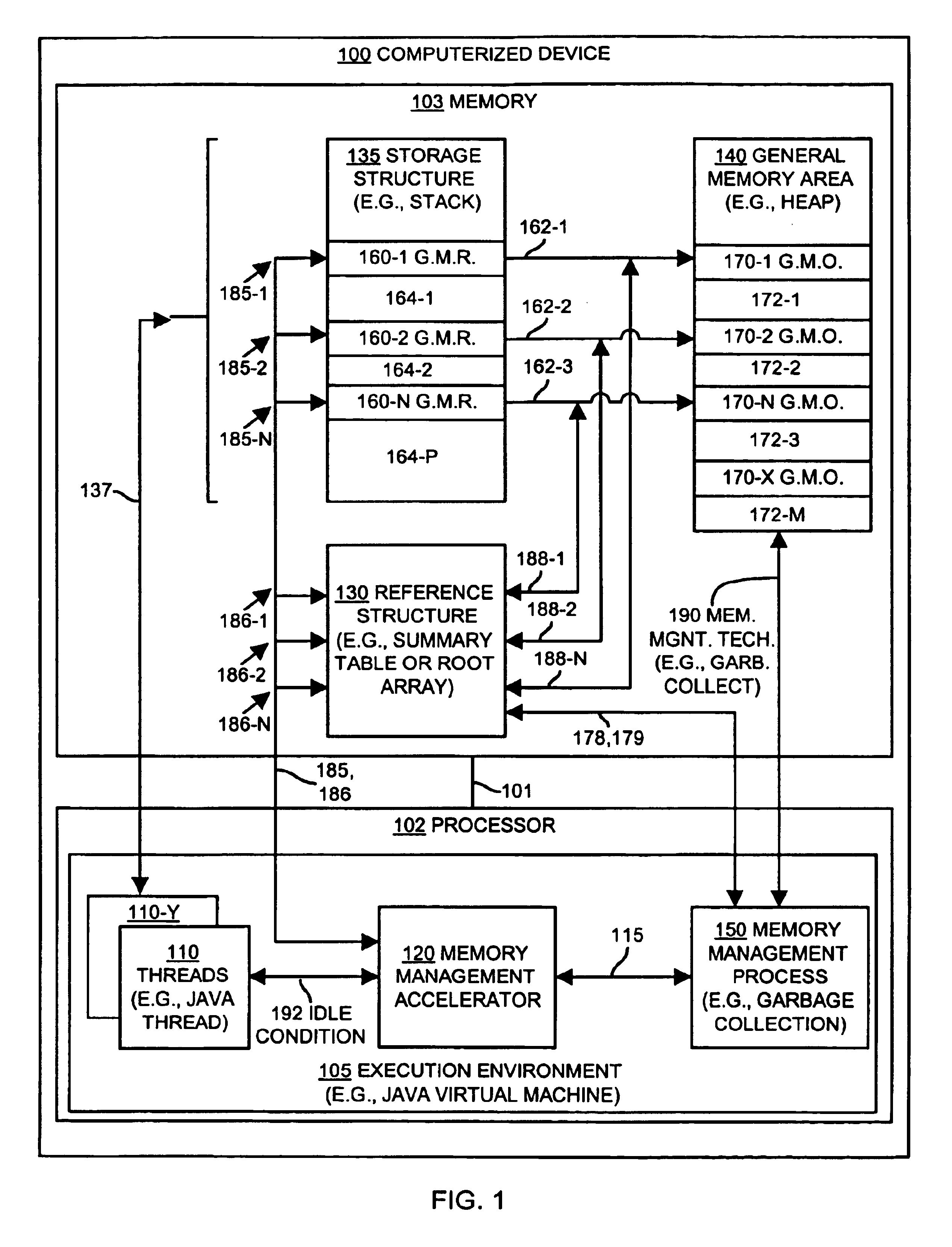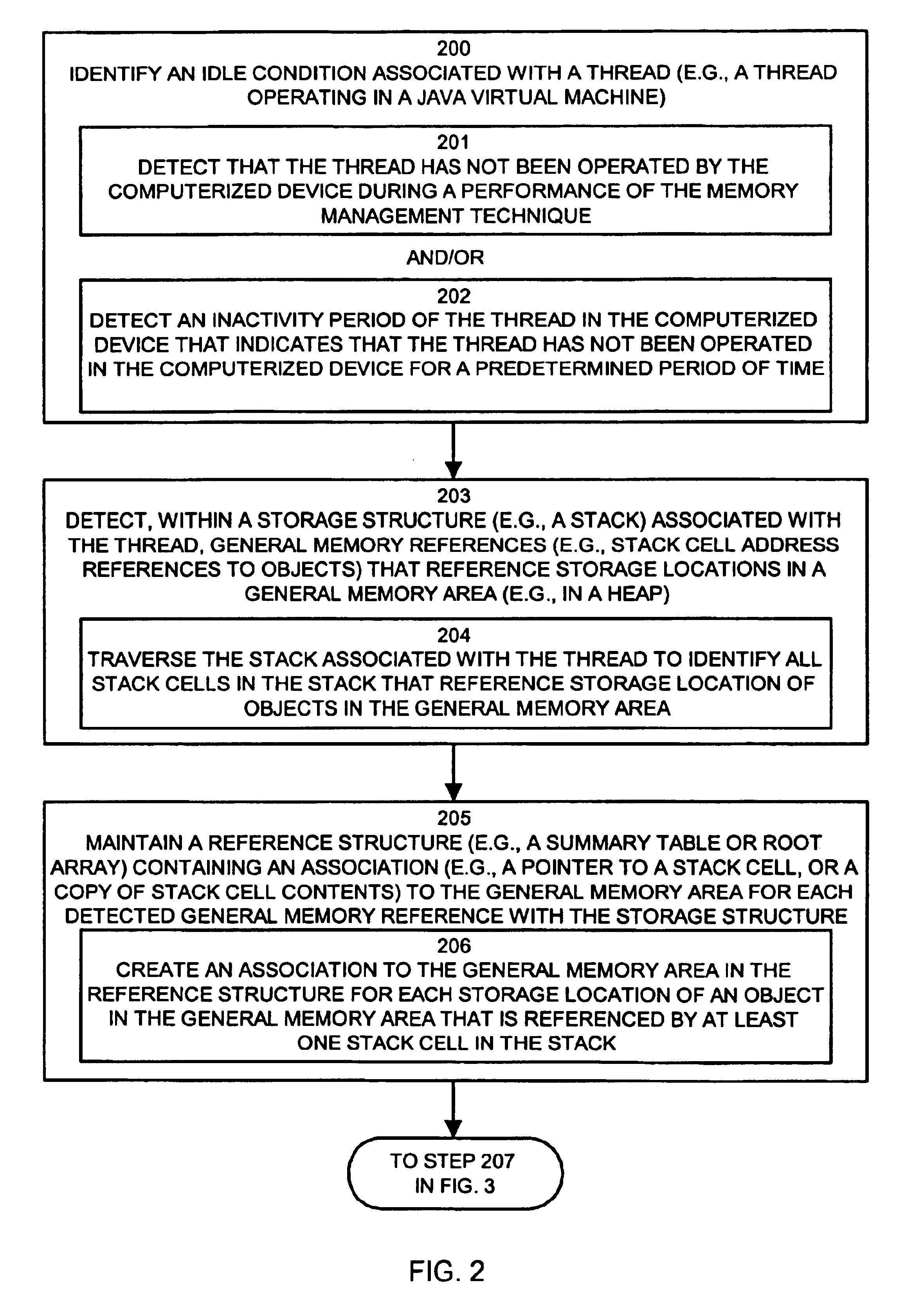Methods and apparatus for performing a memory management technique
a memory management and memory technology, applied in the field of systems can solve the problems of many threads becoming idle or blocked for extended periods of time, the stack scanning process or operation requires significant processing resources, and the conventional techniques and mechanisms for performing memory management techniques suffer from a variety of deficiencies
- Summary
- Abstract
- Description
- Claims
- Application Information
AI Technical Summary
Benefits of technology
Problems solved by technology
Method used
Image
Examples
Embodiment Construction
Generally, embodiments of the invention provide mechanisms and techniques for performing a memory management technique such as, for example, garbage collection, by creating and maintaining a reference structure that stores or otherwise maintains references to a general memory area (e.g., a heap) on behalf of threads, processes, routines or other threads. Once a reference structure is created on behalf of one or more threads, the computerized device can operate or otherwise perform the memory management technique on a general memory area and can access the reference structure to determine what portions of the general memory area contain data already allocated or otherwise referenced by the threads. As an example, if the memory management technique is garbage collection, the garbage collector (e.g., a process or thread) can refer to the reference structure to identify those storage locations in the general memory area that are allocated on behalf of threads and can thus determine what...
PUM
 Login to View More
Login to View More Abstract
Description
Claims
Application Information
 Login to View More
Login to View More - R&D
- Intellectual Property
- Life Sciences
- Materials
- Tech Scout
- Unparalleled Data Quality
- Higher Quality Content
- 60% Fewer Hallucinations
Browse by: Latest US Patents, China's latest patents, Technical Efficacy Thesaurus, Application Domain, Technology Topic, Popular Technical Reports.
© 2025 PatSnap. All rights reserved.Legal|Privacy policy|Modern Slavery Act Transparency Statement|Sitemap|About US| Contact US: help@patsnap.com



